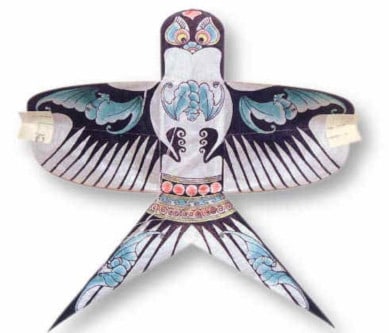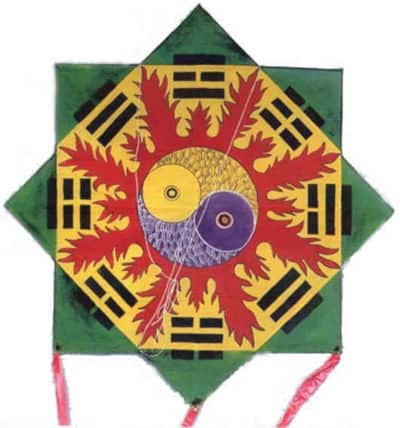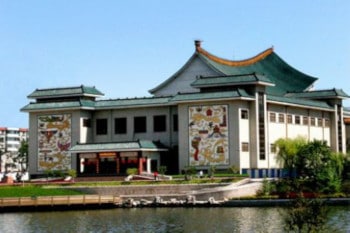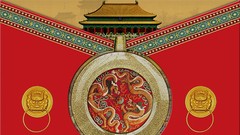![A kite flyer flies releases the world's longest kite during the 2015 Wulong International Kite Flying Festival. [Photo/Chinanews.com]](https://chinamarketadvisor.com/wp-content/uploads/f8bc126e4916168aed3823Chinanews-com-L.jpg)
The kite originates from China and its evolution over the years could help us understand Chinese history and culture a little more.
Through some of the interesting facts mentioned below, we try to illustrate the history and evolution of this invention.
I’m sure you will be surprised by some of them. Let’s start.
- Kites were invented almost 2,300 years ago by two philosophers, Mozi and Lu Ban, who lived on Mount Lu near Weifang in China’s Shandong Province.
- Kites were exclusive to China for many years before the knowledge of how to make and use kites spread abroad.
- The first kite was a wooden Hawk figure that could fly. So, it had the name of a kind of hawk “Yuan”.
- The earliest kites were made of light wood and fabric and were designed to mimic a bird’s natural flight.
- The paper was introduced into the kite-making after the Han Dynasty and replaced bamboo and wood. Consequently, the Chinese name for the kite changed from “Mu yuan”, meaning “wood kite”, to “Zhi Yuan”, as “Zhi” in Chinese means paper.
- The first Chinese kites were used from the Chinese army as “long-distance” communicators, similar to the flags of ships at sea. They were also used to measure distances and calculate the wind.
- According to Han Feizi’s book, Mozi spent three years developing the Wooden Black Eard Kite – a man lifting kite. This kite was used to lift a warrior over enemy troops and gather useful information.
- During the Two Dynasty Period, the Chinese developed the musical kite with bound bamboo strips on the kite. When the kite was in the air, sounded like a musical instrument. The kite was therefore renamed “Fengcheng”, which is the most common Chinese name for kites.
- The size of kites can range between 11.8 inches (30cm) and 2,300 feet (700 meters).
- The Kites themes depicted mythological characters and creatures, as well as legendary figures.
- There are 4 main types of Chinese kites. Centipede kites – Hard-winged kites – Soft-Winged Kites – Flat Kites.
- An example of centipede type is the amazing long Chinese dragons, with a large dragon head and multiple flat sections interconnected.

Click here to see some Chinese Dragon Kites designs – Opens in a new tab.

- The Hard-winged kites have a central bamboo core and symmetrically arranged bamboo frames. The rigid bamboo frame is covered with stretched silk or painted paper.

- Soft-winged kites are more flexible with just one rigid frame and multiple flexible pairs of wings. When these kites are on the air they give a very vivid demonstration of flight. Usually, the depict all kinds of birds, insects, etc.
Click here to see some Chinese Bird Kites Designs– Opens in a new tab.

- The simplest of the four types is the flat kites. Only one rigid bamboo frame and silk or paper to cover it. The advantage of this type of kite is that it is very easy to fly.
- In 2015, a professional team from Weifang broke the Guinness World Record for the longest kite flown. The kite was a centipede type, dragon-head 3.7 miles (6 km) long.
- Kites have an important role in celebrations in China. They represent traditional Chinese cultures that still survive and they hold special meanings and symbolism.
- During the Qing dynasty kites were used to drive off bad luck. In order to do that they had to release the string of the kite during its flight.
- Flying a kite is believed to be good for health. It can help people get away from stress and reconnect with nature.
- There was a tradition during the thirteenth century for testing the wind in order to determine whether an upcoming voyage would be good or not. They used to tie a sailor to a large kite and then launch the kite with the sailor into the wind. If the kite with the sailor flew high and straight, it was a good omen, that the voyage would be good. But if they didn’t fly well or they crashed, they would have to cancel the departure. This tradition is mentioned in Marco Polo’s diary from his travel in Weifang in 1282.
- The city of Weifang in Shandong Province is considered the world capital of kites and hosts the “Weifang Kite International Festival” every year between April 20th and 25th.

- The Weifang Kite Museum displays 2,000 kites from around the world through 12 gallery rooms covering 21,000 square feet (2,000 square meters). – Photo from www.china.org.cn
- Unfortunately, there was a period in China when kite flying was banned. It was during the Cultural Revolution. Throughout this period, anyone caught with a kite was facing a 3-year prison sentence and confiscation of his kite.
Click here to see some Chinese Kites designs – Opens in a new tab.
Online Courses about Chinese Culture from Udemy (Aff.link)

Stay in Touch
 Join our newsletter by using the forms on this website or click here!
Join our newsletter by using the forms on this website or click here! Follow us on Google News
Follow us on Google News Follow us on Facebook
Follow us on Facebook
Featured Image from Chinanews.com. Images of kites from chinakites.org




